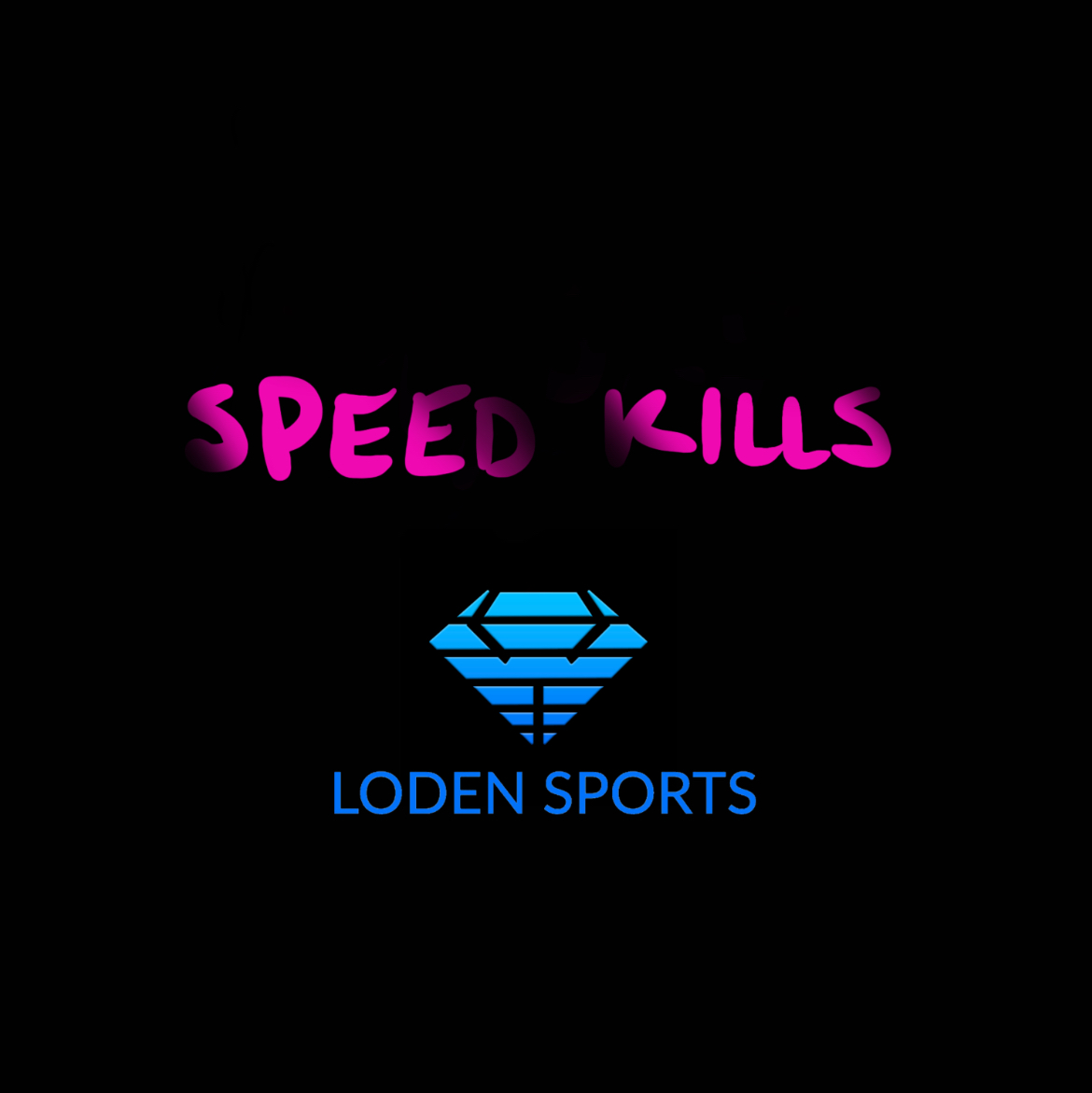
Overview
In early 2022, Loden Sports evaluated over 480 youth baseball athletes with Slammers Baseball between their locations in Englewood and Broomfield, Colorado. The youth athletes ranged in age from 8U to 14U. In addition to the Loden Sports athletic evaluations, each athlete went through an objective baseball evaluation that included the use of Rapsodo and Blast Motion hitting technologies. Following the completion of the evaluations, Slammers Baseball shared the Rapsodo and Blast Motion data for analysis and Loden Sports found a number of strong correlations between the Junior Loden Score System and select Rapsodo and Blast Motion hitting metrics.

In this blog, we will break down the strong correlations between the Junior Loden Score System and hitting the ball hard and why hitting the ball hard is important. We’ll also discuss what is frequently overlooked: the importance of the ease at which a player hits the ball hard and how the Junior Loden Score System factors into that. Finally, we’ll connect the dots on why regular athletic evaluation is important for player health, performance, and their development.
The link between the Junior Loden Score System, exit velocity, and bat speed …
Before we dive into the analysis, each of the 480+ youth baseball athletes with Slammers Baseball participated in a standardized collection of swing and hit data using Rapsodo and Blast Motion. Each athlete took 10-15 swings off a Hack Attack pitching machine set to a velocity that increased by age group: 40 mph for 8U, 45 mph for 9U, 50 mph for 10U, 55 mph for 11U, 60 mph for 12U, 65 mph for 13U, and 70 mph for 14U.
The following chart illustrates the findings from running regression analysis using Junior Loden Score System metrics as the independent variable and a collection of Rapsodo and Blast Motion metrics as the dependent variable. The chart is followed by metric definitions.

- The Blast Motion bat speed metric is defined by how fast the sweet spot of the bat is moving at impact. Max bat speed is the highest reading of the metric from each hitter’s session. Average bat speed is the average reading of the metric from each hitter’s session.
- The Rapsodo exit velocity metric is defined as a measurement of how hard a given ball is hit as it leaves the bat. Max batted ball exit velocity is the highest reading of the metric from each hitter’s session. Average batted ball exit velocity is the average reading of the metric from each hitter’s session.
- Junior Loden Score is Loden Sport’s representation of overall raw athleticism.
- Junior Loden Power Score is Loden Sport’s representation of lower-half explosivity.
- Junior Loden Speed Score is Loden Sport’s representation of top-end running speed.
A simplification: strong correlations were found between the Junior Loden Power Score and bat speed (measured by Blast Motion) and exit velocity (measured by Rapsodo). Good correlations were found between the Junior Loden Score and the Junior Loden Speed Score and bat speed and exit velocity.
An oversimplification: when you improve your athleticism, you improve your exit velocity and bat speed.
What we know about hitting the ball hard ...
Now that we have outlined the link between the Junior Loden Score System and hitting the ball hard. We would like to preface this section by saying that we understand and agree that a hitter goes nowhere without making contact:
- Plate-discipline and pitch-recognition is important.
- Not chasing pitches out of the strike zone is important.
- Being able to hit off-speed pitches is important.
The above is all true. For the player who does all of the above exceptionally well and hits the ball exceptionally hard … your plaque in Cooperstown awaits.

Hitting is hard. Having the ability to hit the ball hard increases the chances of a really good outcome.
Now that we’re all on the same page… Here’s a little analysis that we ran using publicly-available Statcast data on all, qualifying MLB hitters from the 2019 MLB season. The chart is followed by metric definitions.

- The Barrel classification is assigned to batted-ball events whose comparable hit types (in terms of exit velocity and launch angle) have led to a minimum .500 batting average and 1.500 slugging percentage since Statcast was implemented Major League wide in 2015, (com). Top-3 2019 MLB: Nelson Cruz, Mike Trout, Jorge Soler.
- Isolated power measures the raw power of a hitter by taking only extra-base hits — and the type of extra-base hit — into account, (com). Top-3 2019 MLB: Mike Trout, Nelson Cruz, Cody Bellinger.
- Slugging percentage represents the total number of bases a player records per at-bat. Unlike on-base percentage, slugging percentage deals only with hits and does not include walks and hit-by-pitches in its equation, (com). Top-3 2019 MLB: Mike Trout, Nelson Cruz, Cody Bellinger.
- Expected Weighted On-base Average, or xWOBA, is formulated using exit velocity, launch angle and, on certain types of batted balls, Sprint Speed, (com). Top-3 2019 MLB: Mike Trout, Cody Bellinger, Christian Yelich.
- We’re not going to name names, but 8 out of the top-10 players with the highest average exit velocities for the 2019 MLB season received MVP votes…
In summary, there’s a strong link between average exit velocity and a number of popular hitting metrics at the MLB level… and if you look at the leaderboards for the 2019 season (or any season), the top-10 of any of the metrics used above is littered with the high-performers.
Ease of Action

Once the college community caught on to the “hit-the-ball-hard-and-good-things-happen” train, exit velocity became a focal metric in the recruiting landscape. So much so that exit velocity for hitters has almost become synonymous with throwing velocity for pitchers. Swinging for the fences highest exit velocity possible is now endemic in the amateur baseball world.
Typically, a player sacrifices contact when they swing as hard as they can. The best way for a player to hit the ball hard without swinging out of their shoes is to improve the ingredients of the Junior Loden Score System: sprint speed and vertical jumping ability.
An oversimplification: the higher the Junior Loden Score, the more power the hitter has to play with. The more power the hitter has to play with, the less effort they need in their swing to hit it hard. Take two hitters: Hitter A has a lower Junior Loden Score and Hitter B has a higher Junior Loden Score…
- They may both be able to produce a 70 mph exit velocity in-game.
- Hitter A may need to swing out of their shoes to do it.
- Hitter B probably does it much easier, doesn’t need to sacrifice barrel accuracy, can shorten up as needed, has more time to make a swing-decision (bat speed), etc. etc.
Baseball isn’t a long-drive competition. It is okay to acknowledge the importance of exit velocity, but, it is also important to understand how to improve exit velocity without having to make sacrifices in the batter’s box.
Connecting the dots ...

Understanding the relationship between the Junior Loden Score System and the baseball data confirms the importance of benchmarking athleticism using the Junior Loden Score System and regularly monitoring a young athlete’s athletic metrics.
The Junior Loden Score System can be used to benchmark and guide athletic development. If young athletes are going long stretches of time without improving, are they doing the right things in their training?
Regularly monitoring a young athlete’s athletic metrics provides feedback to help the athlete sustain performance in-season. If they are regressing, it will show up on the baseball field in the form of less juice in the bat and slower feet on the basepaths. Again, hitting the ball hard consistently translates to good things. It is important to sustain athletic metrics in-season (by implementing good routines), so that the athlete stays healthy, exit velocities don’t drop, and the athlete competes at their peak physical performance.




